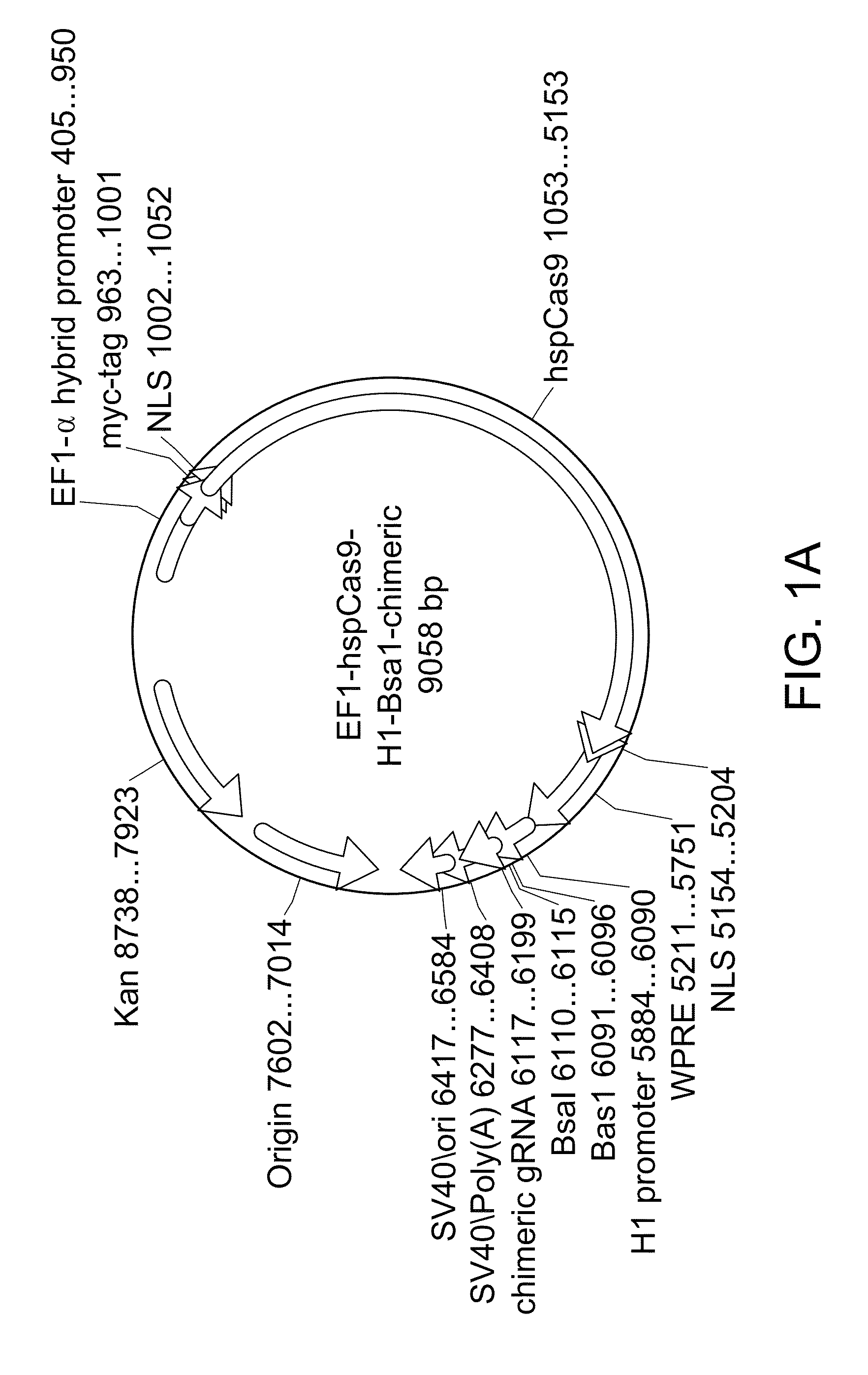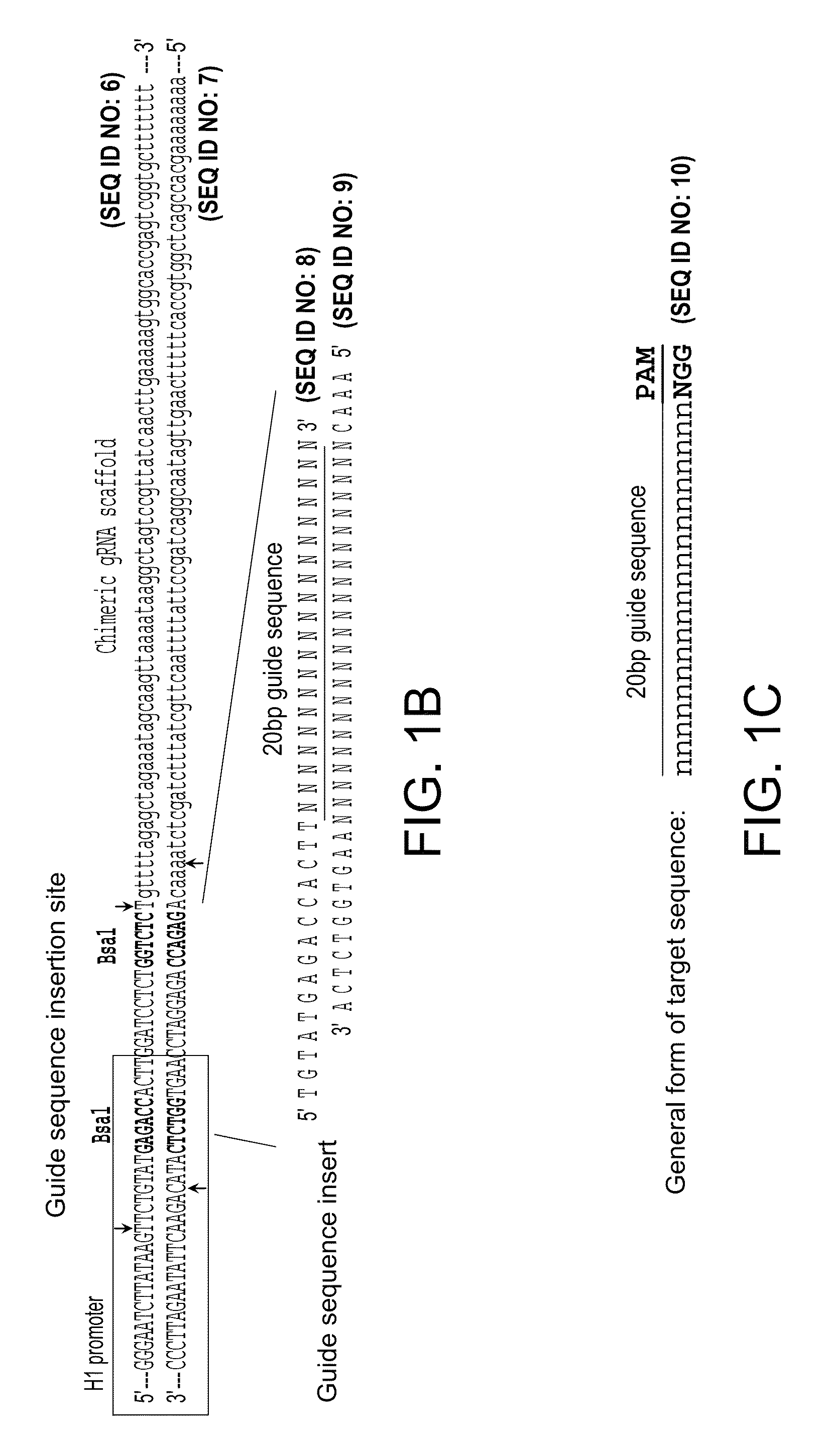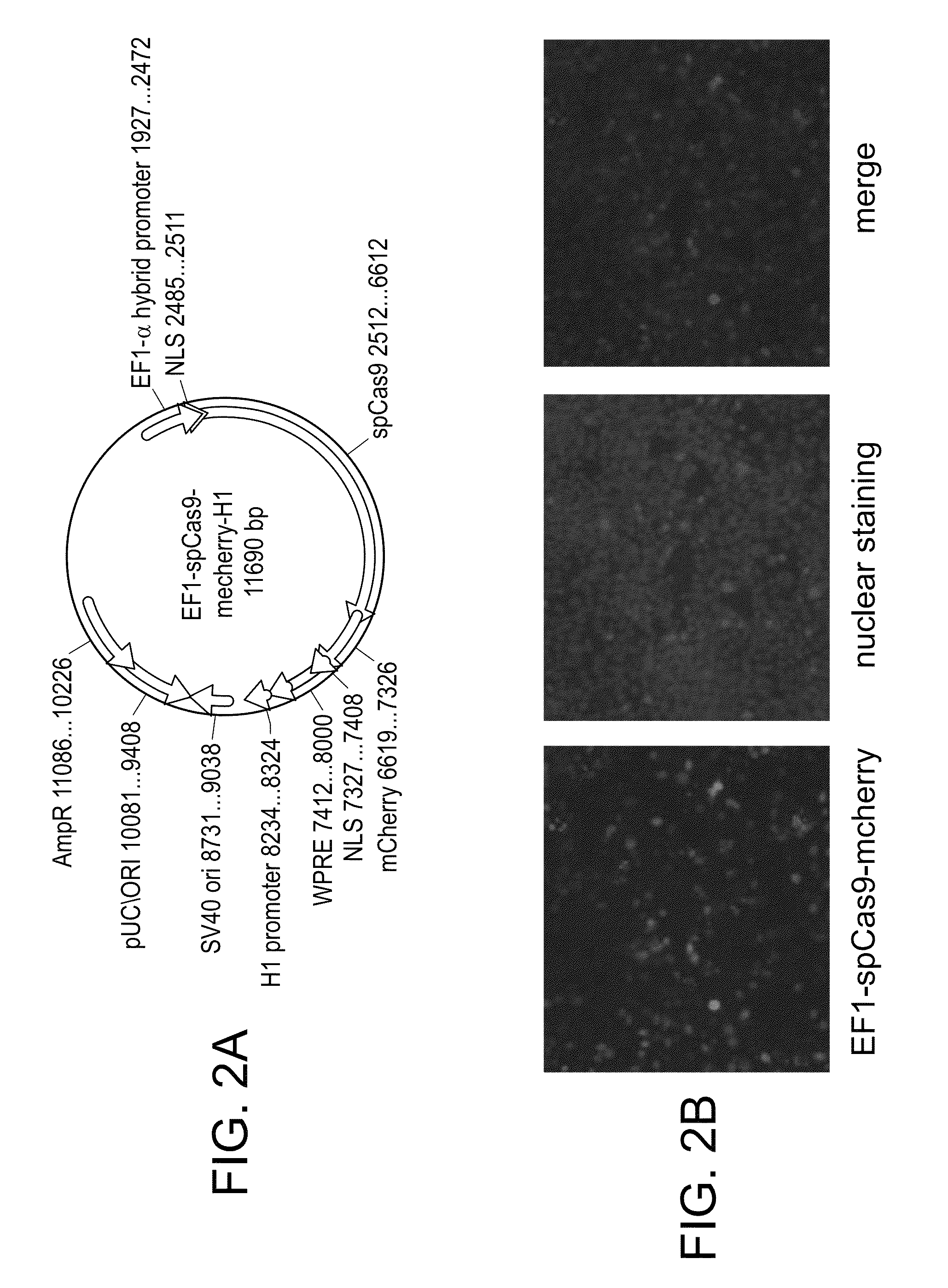Compositions and methods directed to CRISPR/Cas genomic engineering systems
a genomic engineering and cas9 technology, applied in the field of genomic engineering systems for targeting genomic modification in mammalian cells, can solve the problems of not showing whether or not the cas9-crrna-tracrrna system would work in the cell
- Summary
- Abstract
- Description
- Claims
- Application Information
AI Technical Summary
Benefits of technology
Problems solved by technology
Method used
Image
Examples
example 1
Synthesis of a Human Codon-Optimized Polynucleotide Encoding the Cas9 Protein
[0038]A wide variety of factors regulate and influence gene expression levels. Taking into consideration as many of these factors as possible, a polynucleotide was designed for the highest possible level of expression of Cas9 protein in both human and mouse cells. Parameters used in codon optimization included:
[0039]a) codon usage bias,
[0040]b) GC content,
[0041]c) CpG dinucleotide content,
[0042]d) mRNA secondary structure,
[0043]e) cryptic mRNA splicing sites,
[0044]f) premature PolyA sites,
[0045]g) internal chi sites and ribosomal bonding sites,
[0046]h) negative CpG islands,
[0047]i) RNA instability motif,
[0048]j) direct repeats, reverse repeats, and Dyad repeats,
[0049]k) restriction sites that may interfere with downstream applications (e.g., cloning),
[0050]l) efficiency of translational termination.
[0051]The native S. pyogenes Cas9 gene employs tandem rare codons that can reduce the efficiency of translatio...
example 2
Construction of an All-in-One CRISPRII System
[0054]In order to achieve high efficiency cleavage of target sequences of interest by Cas9, an all-in-one CRISPRII system was constructed by cloning the human codon optimized Cas9 sequence (hspCas9; SEQ ID NO: 1) and the crRNA-tracrRNA chimeric guide transcripts (see FIG. 1B, gRNA scaffold sequence in lowercase) into a single mammalian expression construct. The single construct engineered for use in this system is depicted in the map shown in FIG. 1A.
[0055]As shown in FIG. 1A, expression of the human codon optimized polynucleotide encoding the spCas9 (hspCas9) is driven by the EF1-α hybrid promoter.
[0056]To avoid reconstituting the RNA processing machinery, the crRNA-tracrRNA chimeric transcript (referred to as chimeric gRNA) can be easily cloned at the Bsa1 site with 20 base pairs of crRNA target upstream of PAM (protospacer-adjacent motif). See FIG. 1B. Expression of this chimeric gRNA sequence is driven by an upstream H1 polymerase III...
example 3
Expression of Prokaryote-Encoded Cas9 in Human Cells
[0058]Although the all-in-one system described in EXAMPLE 2 used the engineered humanized hspCas9 polynucleotide sequence to express Cas9, the prokaryote Streptococcus pyogenes coded cas9 (referred to as spCas9) was also tested for the ability to express in mammalian cell lines.
[0059]For this purpose, an expression vector containing the prokaryote encoded spCas9 was constructed, as shown in FIG. 2A. As shown in that figure, the spCas9 was augmented with N-terminus and C-terminus NLS, and further fused at the C-terminus with mcherry (red fluorescent protein), thereby allowing the monitoring of expression of spCas9 as well as cellular localization of the protein. Expression of the prokaryote encoded spCas9 was driven by the EF1-α hybrid promoter.
[0060]Expression of this construct, termed EF1-spCas9-mcherry, in human 293T cells revealed that prokaryote encoded SpCas9 specifically express well in the nucleus of the human cells (FIG. 2B...
PUM
| Property | Measurement | Unit |
|---|---|---|
| size | aaaaa | aaaaa |
| fluorescent images | aaaaa | aaaaa |
| fluorescent microscope | aaaaa | aaaaa |
Abstract
Description
Claims
Application Information
 Login to View More
Login to View More - R&D
- Intellectual Property
- Life Sciences
- Materials
- Tech Scout
- Unparalleled Data Quality
- Higher Quality Content
- 60% Fewer Hallucinations
Browse by: Latest US Patents, China's latest patents, Technical Efficacy Thesaurus, Application Domain, Technology Topic, Popular Technical Reports.
© 2025 PatSnap. All rights reserved.Legal|Privacy policy|Modern Slavery Act Transparency Statement|Sitemap|About US| Contact US: help@patsnap.com



